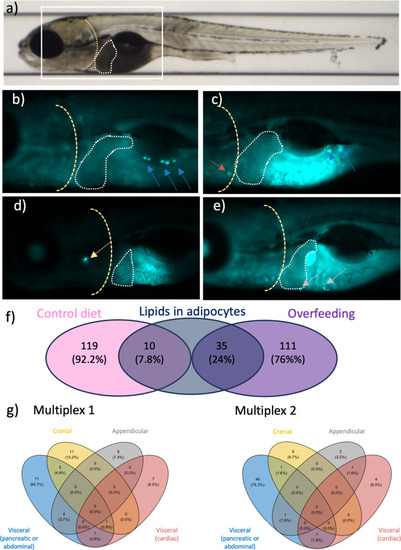Fig. 3
- ID
- ZDB-FIG-250217-30
- Publication
- Mazzaferro et al., 2025 - Functionally characterizing obesity-susceptibility genes using CRISPR/Cas9, in vivo imaging and deep learning
- Other Figures
- All Figure Page
- Back to All Figure Page
|
Lipid deposits observed in several anatomical regions in 10-day-old zebrafish larvae. |

